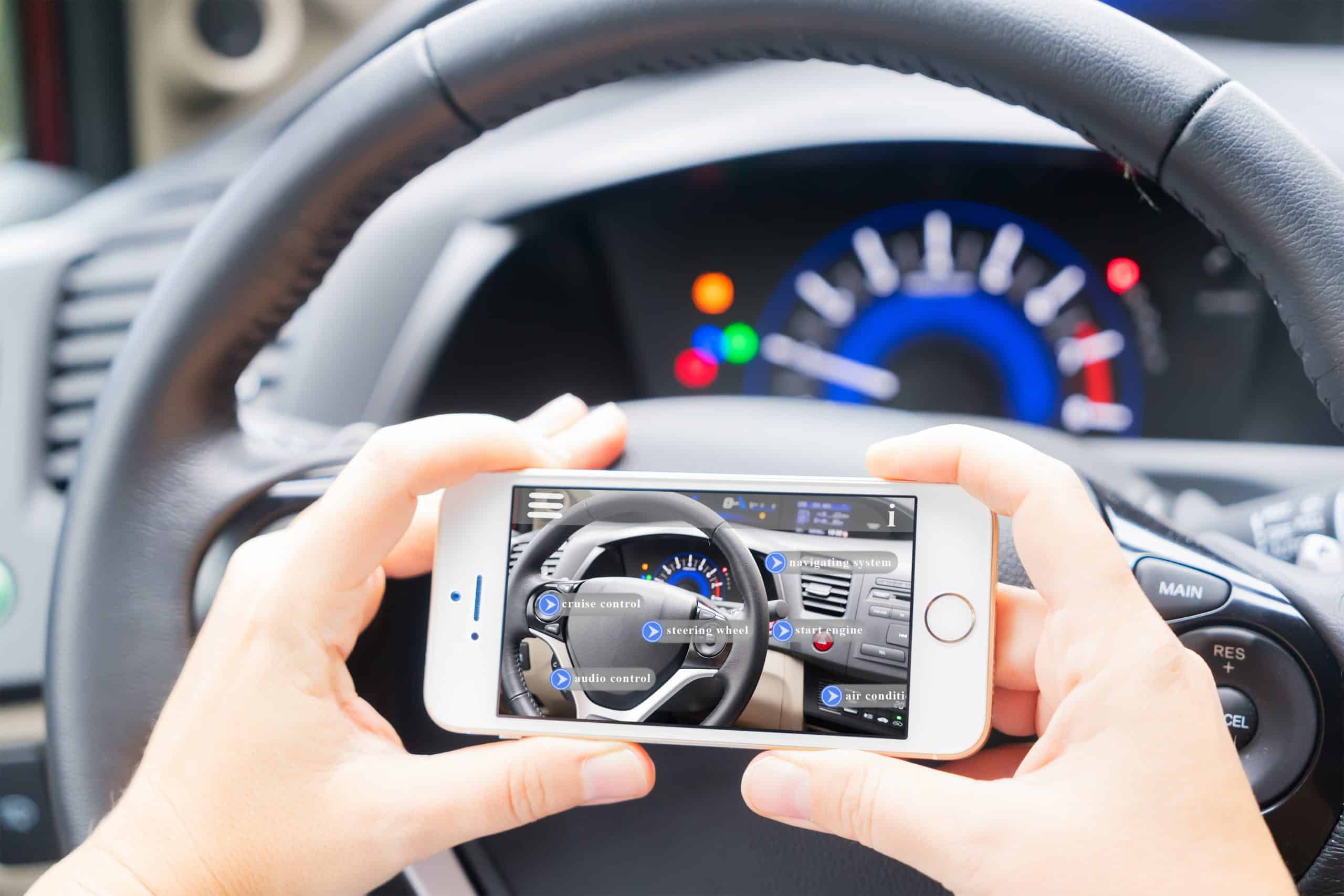Imagine if you could take a test drive of that latest car you’d seen advertised—examine its engine, look at the interior, and even see the road from the driver’s perspective—all without stepping foot outside of your home?
You may not have heard about Augmented Reality – but it is bringing the automotive showroom to customers, and providing visualisation concepts for engineers like never before.
Augmented Reality (AR) is a way of allowing devices to interact with their surroundings, blending the real world with the digital world. Probably one of the best-known examples of this in recent times is the ‘Pokémon Go’ game, which uses AR to add digital creatures to real life surroundings.
So, how is this being used within the automotive industry? It was back in 2008 when AR started to find its way into automotive advertising. MINI bought a campaign to life using a desktop computer and a webcam, enabling viewers to have a 3D walkaround of their new car; highlighting its design and features, and bringing a whole new range of benefits to customers who previously would only have been able to view cars physically.
The possibilities are endless when using AR for advertising; as well as walk-throughs and test drives, customers can see a variety of product, feature and design choices available, seeing exactly how their vehicle would look with different options applied, providing a fantastic sales and marketing tool. Bruno Renhult, Volvo’s senior manager of artificial reality, said: “Brands need to do more than just be at the forefront. We, as creators, need to make good experiences and initiatives—period.”
But it doesn’t just stop at advertising. AR is now being used more frequently during the design and manufacturing stages of car-making, allowing companies to be more creative and minimise their costs. During manufacturing, process steps, assembly examples and quality control, information can be superimposed into an actual work environment.
In 2016, BMW became the first car manufacturer to devise vehicles using only components from computer games. Niklas Drechsler, who handles corporate and governmental affairs for BMW Group, said: “Virtual reality applications are a good way of making our innovations something to experience and of illustrating our technology in clear terms. We use it both for our employees in training courses and for our customers at dealers.”
Here are just some of the other big players in the automotive industry, who are embracing the use of Augmented Reality:
- BMW launched a visualisation tool on Google Play that allows users to explore different options on its latest models. BMW service engineers wear head-mounted displays whilst working on cars and augmented reality projections instruct them how to proceed and what tools to use.
- Hyundai created an augmented reality app that acts as a user’s manual—identifying components of the vehicle and instructing the user on how to perform maintenance.
- Volkswagen uses spatial augmented reality to project virtual data on to real vehicle design models, allowing the immediate analysis of components.
The future of AR – Safety First
As the use of AR continues to grow, developments are being made within the area of safety, which has the potential to bring huge advantages to the automotive industry. Features currently under development include:
- AR built into windscreens, using digital displays to highlight risks in the environment and warn of potential distractions or unsafe driving habits.
- See-through AR view of the terrain ahead (Transparent Bonnet Concept), making the front of the car ‘virtually’ invisible from the inside, allowing for a safer and more accurate reading of the terrain especially when off-roading.
- Night driving assistance via enhanced maps, presented safely and accurately to the driver, allowing them to continue looking at the road ahead – reducing distractions and accidents.
- Projection of Blind Spot Detection, Forward Collision and Lane Departure Warnings information at a perceived virtual distance approximately six feet ahead of the driver.
And once more, MINI appears to be leading the way into the future with an exciting concept under development for ‘Augmented Vision Glasses’ which are worn by the driver and use see -through technology. An electronic display allows users to see information on a glass screen in their direct field of vision, while still being able to see through it and see other road users.

MINI – Augmented Vision Glasses
BMW Press Group, (2017) MINI Augmented Vision
With research analysts at Technavio predicting that the global automotive AR market will grow steadily at a compound annual growth rate of almost 18% by 2020, who knows how many more exciting products could go into development during that time?
References
BMW Press Group, (2017), MINI Augmented Vision [ONLINE]. Available at: https://www.press.bmwgroup.com/global/photo/compilation/T0212042EN/mini-augmented-vision:-a-revolutionary-display-concept-offering-enhanced-comfort-and-safety-exclusive-prototype-of-augmented-reality-eyewear-underlines-the-innovative-flair-and-creativity-of-the-mini-brand [Accessed 26 May 2017].
H.B.Duran. (2017). How Augmented Reality Is Driving Today’s Automotive Industry. Available: http://www.alistdaily.com/digital/augmented-reality-driving-automotive-industry/. Last accessed 12/05/2017.
Jeffrey Heimgartner. (2016). What Is Augmented Reality and How Can Engineers and Designers Use It?. Available: http://www.engineering.com/DesignSoftware/DesignSoftwareArticles/ArticleID/11873/What-Is-Augmented-Reality-and-How-Can-Engineers-and-Designers-Use-It.aspx. Last accessed 12/05/2017.
Melanie May. (2015). Augmented Reality in the Car Industry. Available: https://www.linkedin.com/pulse/augmented-reality-car-industry-melanie-may. Last accessed 12/05/2017.
Retrieved from http://www.nbnco.com.au. (2016). Augmented Reality and how it could change the workplace. Available: http://www.nbnco.com.au/blog/business/how-AR-could-change-the-workplace.html. Last accessed 12/05/2017.


